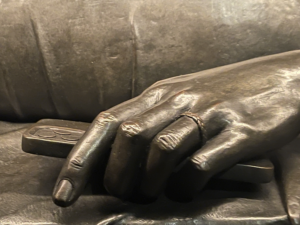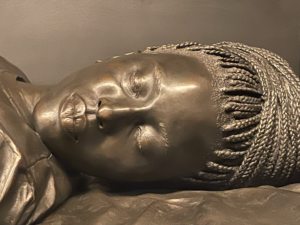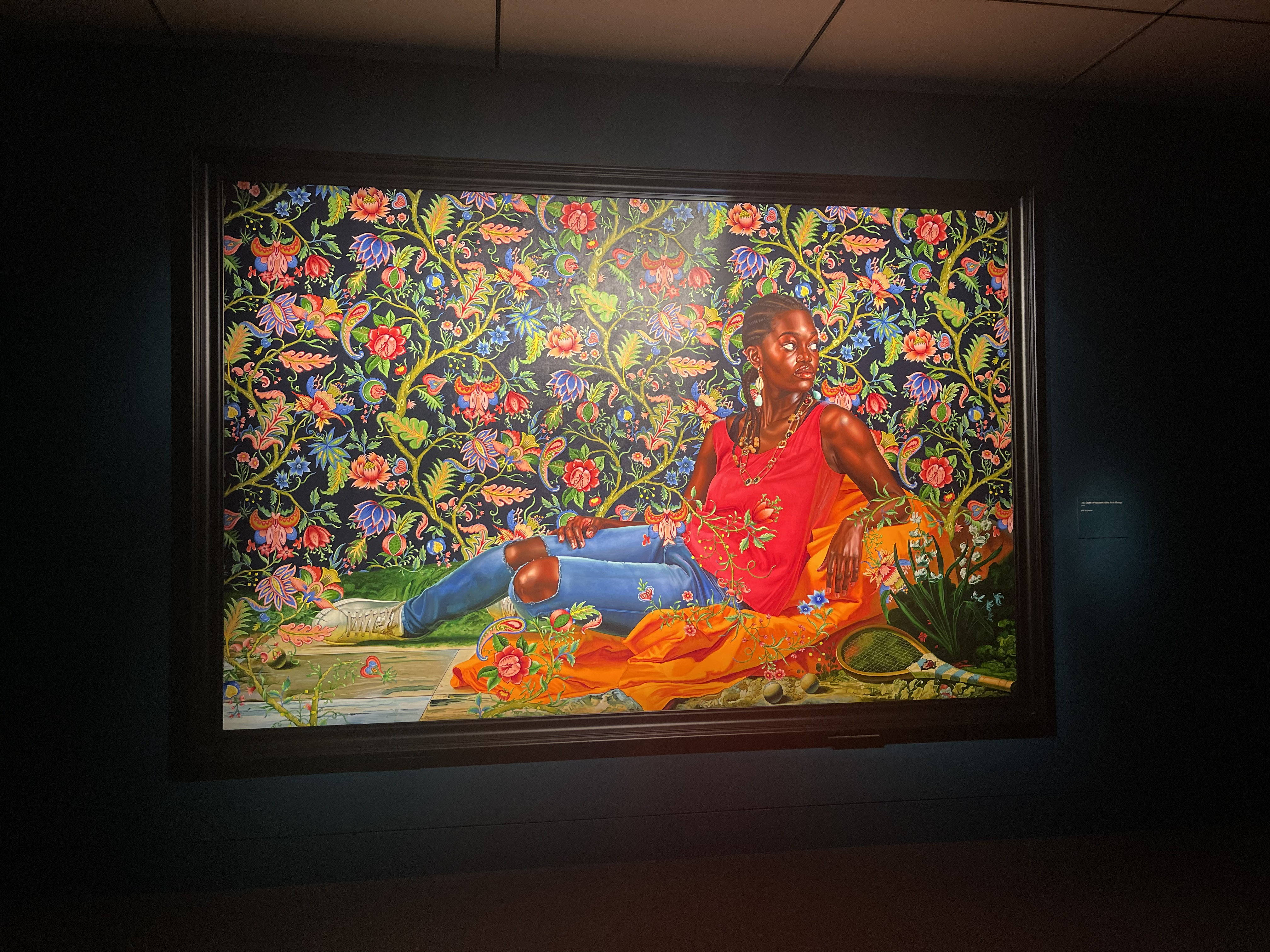Kehinde Wiley: An Archaeology of Silence at The Houston Museum of Fine Arts
Visiting Kehinde Wiley’s “An Archaeology of Silence” at the Houston Museum of Fine Arts, I found myself immersed in a profound narrative that speaks volumes about the resilience and elegance of Black bodies against the backdrop of state violence. Wiley’s masterful artistry invited me to a place where the femininity of women is celebrated through the tender portrayal of their figures. The paintings, expansive and alive with color, conveyed a potent blend of strength and vulnerability. They resisted the traditional stiffness of sculptures for what I can only describe as a celebration of natural curves, embodying not just a clear artistic choice but a profound statement on the humanization and validation of Black women’s experiences and our bodies.
The sculptures scattered throughout the exhibition resonated deeply with me, their intricate details—hair textures, the mapping of veins, bones and muscle—echoing a universal humanity. These sculptures, some moving me to tears, were not just art; they were a mirror reflecting our shared experiences. Adorned with vines and leaves, they symbolized a connection to the earth so profound, reminding me of the resilience in the phrase, “They tried to bury us; they didn’t know we were seeds.” This saying, which rose to prominence during the George Floyd protests of 2021, underscored the enduring spirit of our Black communities in the face of systemic oppression and violence.

 The exhibition’s portrayal of fabric and texture added a tactile dimension to each piece, making the portrayal of Black bodies more intimate and reverent. This reverence transformed the space into a sacred ground of celebration and honor, particularly poignant in Wiley’s focus on women. This choice not only elevates the representation of Black women in art but also challenges us to reconsider their place in society and history.
The exhibition’s portrayal of fabric and texture added a tactile dimension to each piece, making the portrayal of Black bodies more intimate and reverent. This reverence transformed the space into a sacred ground of celebration and honor, particularly poignant in Wiley’s focus on women. This choice not only elevates the representation of Black women in art but also challenges us to reconsider their place in society and history.
“An Archaeology of Silence” is not just an exhibition; it is a powerful ode to Black existence, beauty, and perseverance. Wiley’s delicate handling of such a weighty subject as state violence, treating those affected with the utmost respect and dignity, profoundly impacted me. The figures, intertwined with nature, spoke of rebirth and a return to origins, highlighting the cyclical nature of life and resistance.

This exhibition is a must-visit for anyone seeking to engage with art that captures the complex tapestry of human emotions and the unyielding power of community in the face of adversity. It is a celebration of life, a testament to survival, and a call to see and honor the beauty and strength of Black bodies and spirits.

